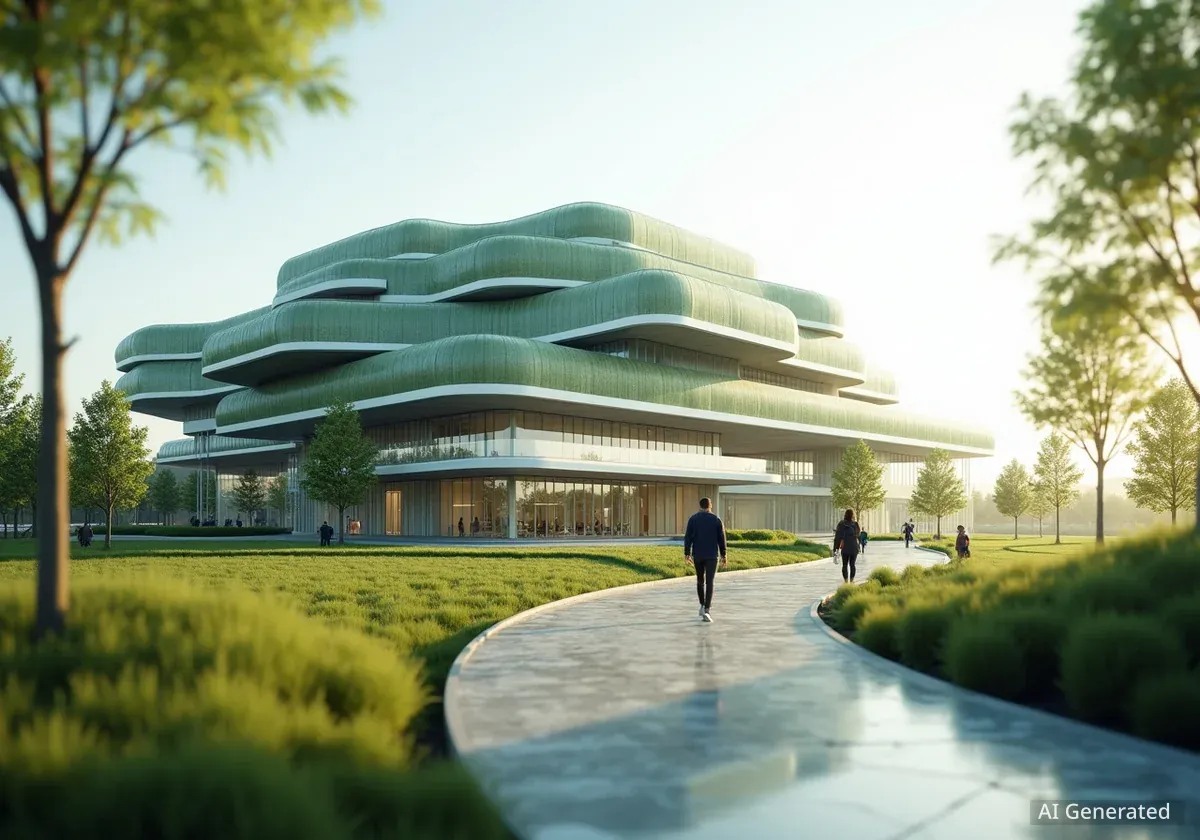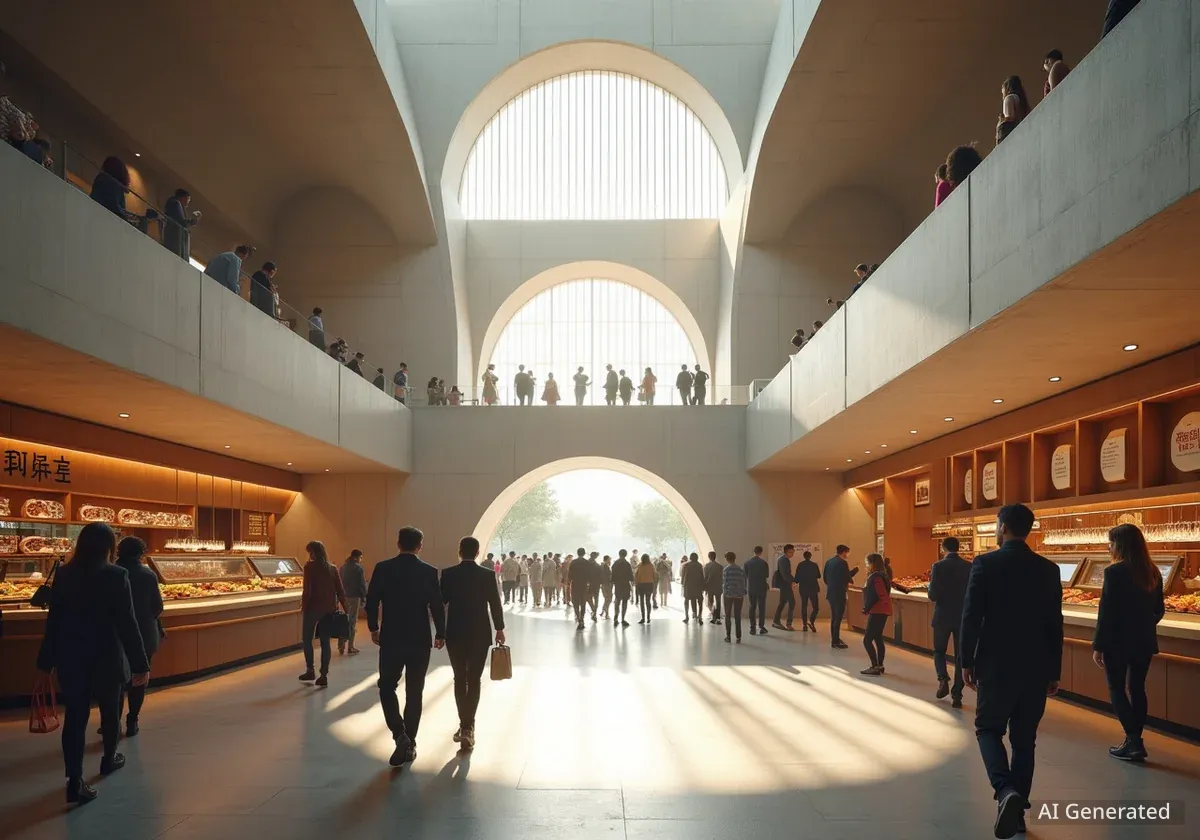The American Institute of Architects' Committee on the Environment (AIA COTE), in partnership with the Association of Collegiate Schools of Architecture (ACSA), has announced the winners of its annual Top Ten for Students Competition. Ten student projects and one honorable mention were selected for their innovative approaches to sustainable and equitable architectural design.
This year's competition challenged students to create designs that achieve net-zero emissions, adapt to climate impacts, and address social and environmental inequities. The winning entries showcase a deep understanding of integrated design, natural systems, and technology.
Key Takeaways
- Ten student projects were named winners in the prestigious AIA COTE Top Ten for Students Competition.
- The competition emphasized sustainable goals like net-zero emissions, climate resilience, and social equity.
- For the first time, the competition was split into two categories based on student academic level.
- Clemson University and the University of Waterloo each secured two winning spots.
Focus on Integrated and Resilient Design
The AIA COTE Top Ten for Students Competition is a benchmark for sustainable design education. It encourages students to move beyond conventional aesthetics and consider the full lifecycle and environmental impact of their projects. The core mission is to highlight designs that protect and enhance the environment through a holistic approach.
Participants were tasked with integrating architecture, natural systems, and technology to solve complex environmental challenges. The jury evaluated projects based on their ability to create solutions that are not only environmentally responsible but also beneficial to their communities.
A New Competition Structure
A significant change for the 2024 competition was the introduction of two distinct categories. Category I was created for first-year and second-year students, while Category II was for upper-level students. This change allows for a more equitable evaluation process, recognizing the different stages of architectural education.
Category II Winning Projects
The upper-level student category featured a range of sophisticated and well-researched proposals addressing diverse environmental and social issues. Here are the winning projects from Category II.
De-Clustered Environmental Middle School
This project, set in Pittsburgh’s Inner Fringe, was designed by Russell Tsai and Julia Hu from Carnegie Mellon University, with faculty advisor Jongwan Kwon. The design focuses on ecological literacy and climate resilience.
The jury commented that the project "demonstrates a powerful and sophisticated understanding of ecological literacy and climate resilience. The design approach creates a delicate memorable design through passive strategies of ecological regeneration."
One444 Refuge
Jonah Kramer and Joel Ferrick from the University of Detroit Mercy, guided by faculty member Thomas Provost, developed this transitional housing project for refugees. The design emphasizes locally sourced materials and community feedback.
According to the jurors, "One444 Refuge is a timely and socially impactful design project... The use of locally sourced materials and CLT construction reduces the embodied carbon, while advanced energy systems reduce the operational carbon footprint of the project."
Four Membranes
From the University of Waterloo, student Nicole Cao, under the guidance of faculty Jaliya Fonseka, presented a project that redefines the boundaries between public and private spaces. The design integrates passive and active systems to create a climate-responsive structure.
The jury praised the project, stating, "Four Membranes presents a visually striking design that expands the definition of inside and outside / public and private while using this expansion to address the AIA Framework ten measures."
Standout Institutions
Two universities distinguished themselves by having two winning teams each in this year's competition: Clemson University and the University of Waterloo. This achievement highlights the strength of their sustainable design programs.
Fish House
Ciela Stark and Leah Gripp of Clemson University, advised by Ulrike Heine, Amy Trick, and Rayshad Dorsey, designed a self-sustaining working fish dock. The project intertwines ecology, culture, and local livelihood.
Jurors called the project "fascinating and original," noting its "deep investigation into site conditions, rigorously integrating all ten AIA Framework measures into a holistic design approach."
Time Frame
Luca De Vasconcelos Ricci from the University of Waterloo, with faculty Jaliya Fonseka, created a project with a simple yet elegant form. Its narrative projects the building's life hundreds of years into the future, exploring adaptability and legacy.
The jury noted, "Time Frame presents a simple yet beautiful architectural parti, balancing clarity of form with technical rigor. The imaginative storytelling component... adds a poetic dimension to sustainability."
Twin Canopy Research Center
A team from the University of Pennsylvania, including Jiaye Li, Yudi Dong, and Haozheng Wang, with faculty William Braham, designed a research center with a focus on climate-responsive strategies. The structure uses optimized PV panels and biogenic materials.
"Twin Canopy Research Center presents a sophisticated design that clearly demonstrates climate-responsive strategies, with the hybrid systems integrated into roof structures that shelter flexible spaces," the jury remarked.
Symbiosis
Irina Chemencedji from the Savannah College of Art and Design, advised by Ryan Bacha, proposed transforming a former mill site into a regenerative community space. The design combines adaptive reuse, affordable housing, and phytoremediation.
The jury highlighted its "strong and thoughtful architectural vision... The design’s commitment to adaptive reuse and phytoremediation creates a strong link to ecological restoration."
Center for Information + Collaboration
Montana State University student Elena Silverman, with faculty Eric Watson, designed a low-energy, high-performance building that promotes community engagement. Its flexible public spaces and cascading library encourage social interaction.
The jurors found it an "exceptional design for clarity and organization," praising how it "successfully promotes health and community engagement."
Deus Ex Machina
From Université Laval, students Arnaud Belzile, Zachary Lambert, and Thomas Nadeau-Gauthier, with faculty Claude Demers and André Potvin, created a project integrating technologically inspired architecture alongside a historic cathedral.
The jury described it as a "fearless integration... creating a thoughtful dialogue between past and future while employing passive strategies that enhance comfort and sustainability."
Firewise Futures
Jennifer Layer from Clemson University, with faculty Sallie Hambright-Belue and Matthew Nicolette, designed a community-centered model for wildfire resilience. The project embeds fire safety education into its programming and architecture.
"The narrative is beautifully aligned with the design, creating an architectural experience that is both poetic and functional," the jury commented.
Honorable Mention
DFDi
Priscilla Leung and Audrey Delia from Syracuse University, with faculty Brian Lonsway, earned an honorable mention for their project. The design features a modular 'kit of parts' concept that is innovative and scalable for various community needs.
The jury recognized it as an "impactful design with a high level of detail, vivid graphics and a thoughtfully designed façade showcasing the rigorous research and technical mastery."
Students and educators interested in future competitions can now review the brief for the 2026 AIA COTE Top Ten for Students Competition for details on upcoming submission requirements.





